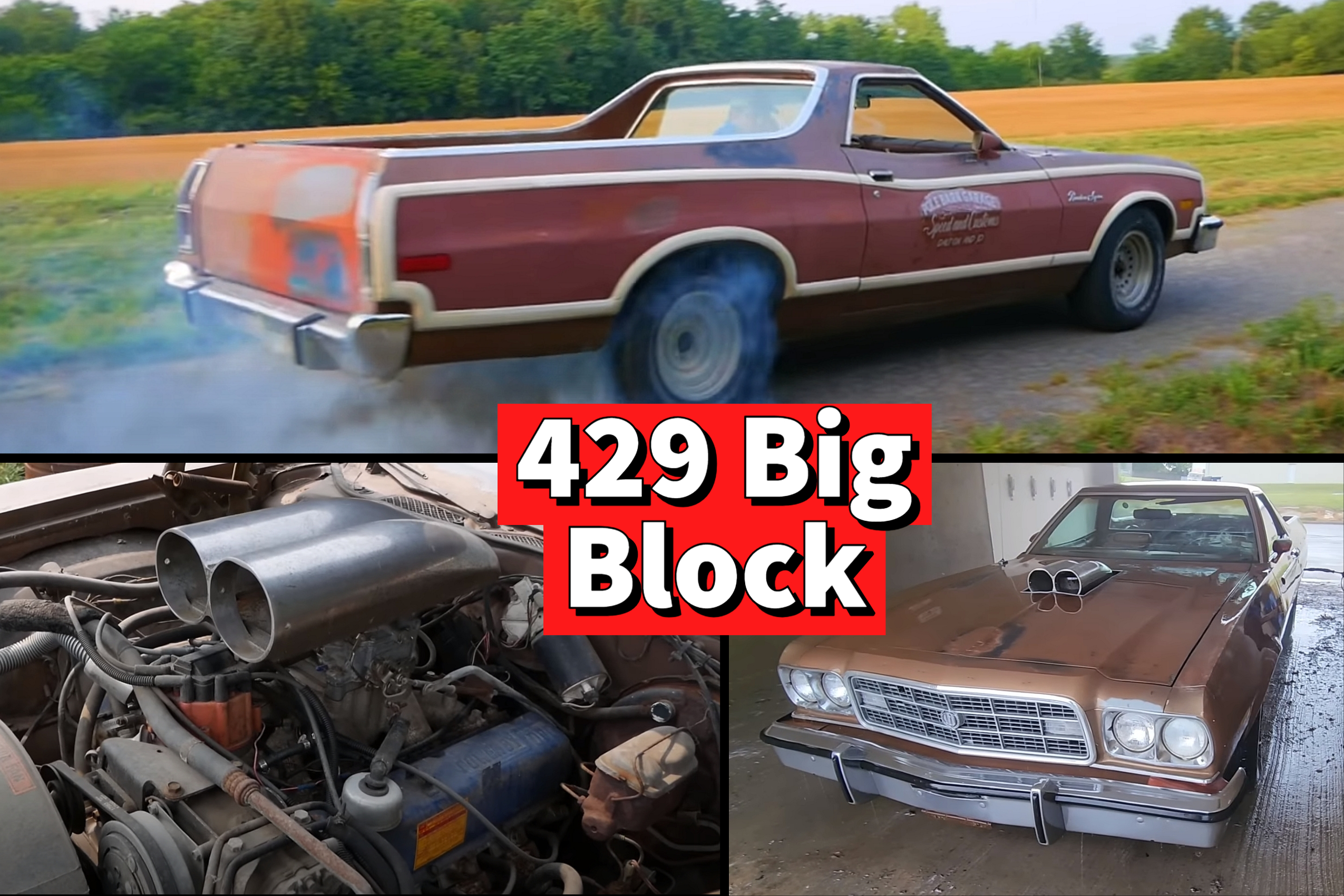The Chevrolet El Camino may be the most iconic utility coupe, but it’s not the vehicle that started the car-based pickup craze. That title goes to the Ford Ranchero.
The El Camino arrived in 1959 as a two-door Brookwood station wagon with the roof cut off behind the B-pillars. It was based on Chevrolet’s GM B full-size platform. The same recipe was used by Ford two years earlier. In 1957, the then-new Ford full-size platform spawned the Ranchero. The pickup was a two-door Courier sedan delivery with an open, reinforced bed.
After three years on the market as a full-size utility, the Ranchero configuration was moved on Ford Falcon underpinnings. Now a compact vehicle, the second-gen Ranchero remained in production until 1965. At the time, the El Camino had returned as a midsize vehicle based on the Chevelle.
Due to the increasing popularity of intermediate cars, Ford also moved the Ranchero into the midsize market. It was now more similar to the Fairlane. That lasted until 1968 when it adopted Torino styling cues. In 1977, the Ranchero was restyled in line with the Ford LTD II, which replaced the Torino. Ford discontinued the nameplate two years later, replacing it with the short-lived, compact Durango. Yes, Ford was the first company to use the Durango name, and you can find out more about that in my story about this relatively unknown coupe utility.
Like most vehicles produced in the 1960s and 1970s, the Ranchero also became part of the muscle car wars. It got the Fairlane’s 315-horsepower, 390-cubic-inch (6.4-liter) V8 in 1966 and the Torino’s 428-cubic-inch (7.0-liter) Cobra Jet in 1968. The latter came with 335 horsepower on tap. The Ranchero became even more potent in 1970 thanks to the Torino’s 429-cubic-inch (7.0-liter) Super Cobra Jet, rated at 375 horsepower.

While many muscle cars lost their big-block V8 engines after 1971 due to stricter emissions ratings, the Ranchero retained the 429. However, the lower compression ratio pushed the oomph down to 205 horsepower. The low figure is also due to Ford’s switch from gross to net ratings, but it was still notably less powerful than in 1971. Output remained unchanged in 1973, the 429’s final year in the Ranchero.
The Malaise Era was already settling in at the time, and new cars with more than 200 horsepower were becoming rarer than hen’s teeth. But that didn’t stop gearheads from taking matters into their own hands by modifying the mundane engines that came from the factory. The derelict 1973 Ranchero you see here proves that not all Malaise Era performance vehicles were underpowered.
Documented by YouTube’s “Pole Barn Garage,” this Ranchero looks like it had a rough life. The paint has seen better days, the simulated woodgrain paneling is pretty much gone (yes, this is a Squire version), and the dashboard is cracked from prolonged exposure to sunlight. But it’s a factory 429 V8 car which is quite rare for 1973. Moreover, a previous owner rebuilt the engine with lots of high-performance parts.
How powerful is it? Well, our hosts claim it should produce around 400 horsepower. And it’s “should” because the engine has a few issues because the car has been sitting for years. It also needs a new tank and fuel lines, but it runs well for what it is, and it’s still potent enough to spin the rear wheels into a burnout. All told it’s a cool rat rod. And you don’t see many 1973 Rancheros like this.
